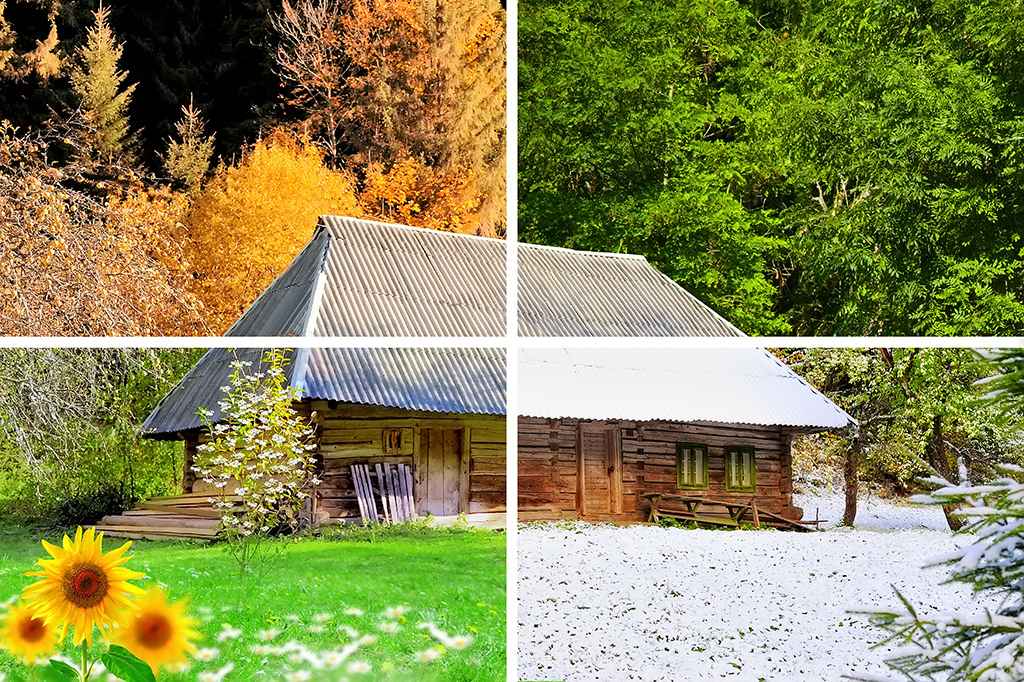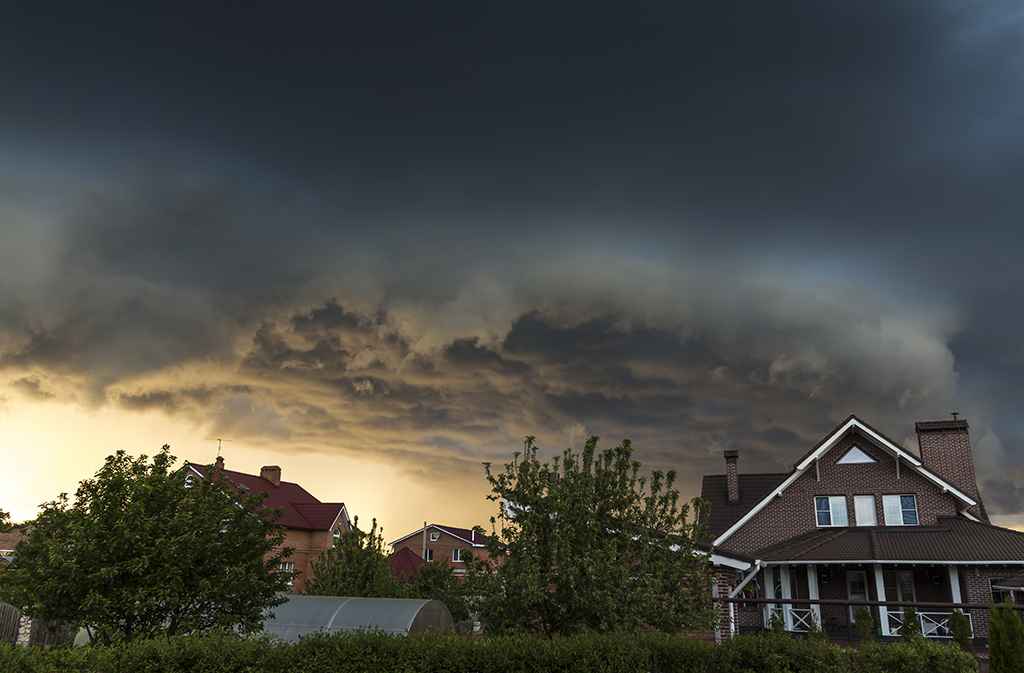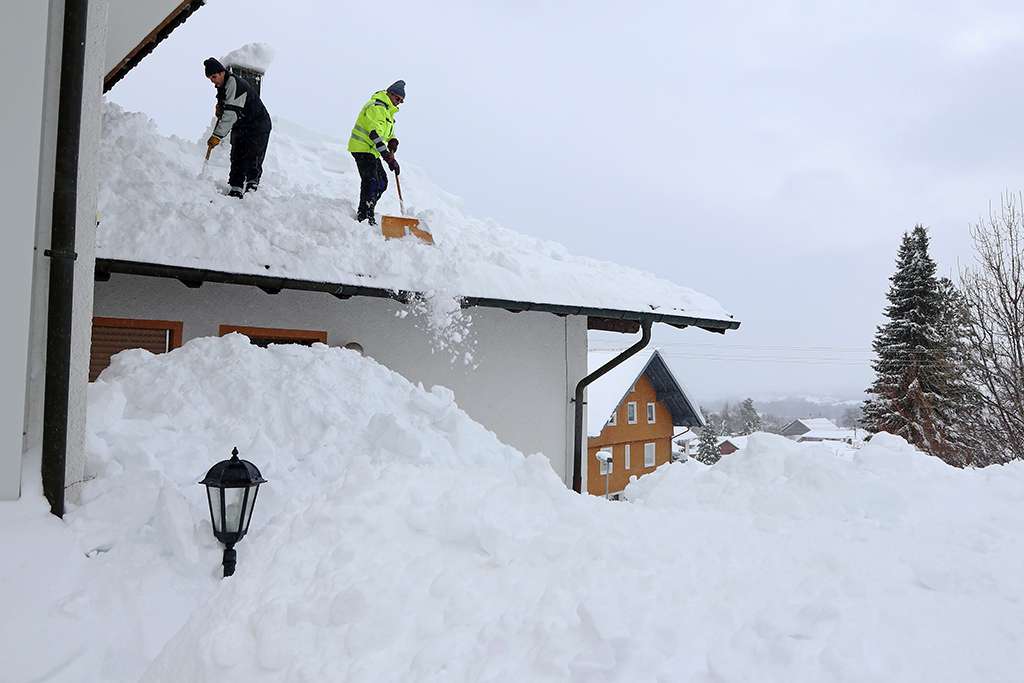When is Roofing Season?
Roofing season can vary due to weather conditions. Talk to your local professional roofer about whether they can work during the weather you’re experiencing.
When is roofing season in North America? That depends on where you live in our vast continent. The roofing season in Michigan will be different than the roofing season in Florida. It’s not just snowy Michigan weather that limits roofing, but the high winds of the Floridian climate might prevent a roofer from getting their job done too. In other areas, such as California, roofers must adjust their practices for high-heat conditions.

While roofers can work around certain weather challenges, especially in emergencies, most prefer not to work when weather conditions make the work more dangerous than usual or when weather may impact the proper installation of the roof. If the roof absolutely must be done, roofers may charge extra to make up for the precautions they must take to ensure their safety and to ensure your roof is installed properly.
If you’re trying to plan the best season to replace your roof or get some repairs done, you may want to understand how seasonal changes impact roofing. The best day to install a roof is one without extreme low or high temperatures, high winds, or precipitation. We’ll explain why these weather conditions impact roofing. We’ll also discuss when you can generally expect your roofing season to start and end based on your climate.
When Does Roofing Season End?
Cold Climates
For all of Canada as well as the American Northeast and Midwest, roofing season winds down as winter begins. When temperatures are consistently below 10 degrees Celsius (50 degrees Fahrenheit), asphalt shingles begin to feel the effects of the cold and stiffen. This isn’t a problem when they are on your roof. However, during installation professional roofers prefer a more flexible shingle.

Further, asphalt shingles which are installed in cold weather may not be exposed to the necessary heat in order for their sealant to activate. The shingles may not seal down until the temperatures rise, increasing the risk that a windstorm disturbs the shingles before they have had the opportunity to seal down. As roofers don’t want you to worry about your new roof before the shingles have had a chance to seal down, most will advise you to wait until the warmer weather returns to install a new roof, if it’s possible.
In higher latitudes of North America, winter can be too long for most roofers to wait through. Many professional roofers there have adapted their business practices for the cold. They may manually seal shingles in cold weather, and manual sealing may even be required in certain areas by the terms of the manufacturer’s warranty or local building codes. In addition, professional roofers will take care to store shingles in a warm place prior to installation to prevent shingles from becoming stiff, and they must take additional safety precautions to protect their employees from frostbite, falls and other risks that may be increased during winter weather.
However, most roofers will still prefer to slow down their business over winter. Those that remain in operation over winter may include the cost of their extra safety precautions and installation requirements in their roofing estimates as a routine practice. Although, some may also offer a discount in the off-season to keep their business steady throughout the year.
Hot Climates
In the Southern United States, roofing season ends during the peak of summer. High-heat conditions are tough on roofers as they work outside. This is especially true in coastal areas, where high humidity makes it harder for the human body to cool itself. Roofers can adjust their practices to work around the sun, including starting early and taking a break at midday.

Just as asphalt shingles change in the cold, they also respond to heat. Shingles are more flexible when temperatures are warmer. On the hottest days, shingles and other roofing materials may become so hot to the touch that roofers choose to wear gloves.
In extreme heat, roofing companies may need to offer their employees frequent breaks in cool spaces and lots of water. Roofers also need to be monitored closely for heat illnesses. During high-heat conditions there are safety precautions that companies can invest in. Some safety precautions are required by law, so you should be aware of the rules and regulations in your jurisdiction.
However, the additional cost and risk to employees dissuades some roofers from doing summer work. After all, in the southern states, winter may not interrupt roofing season much, if at all; so roofers have more time to make up for their summer break. Thus, in the southern states, summer is considered the roofing off-season.
Further, in the hottest areas of North America, it can get too hot for roofers to attempt to work. Lake Havasu, Arizona, experiences the highest temperatures of any community in the United States. According to USA Today, temperatures can exceed 48 degrees Celsius (120 degrees Fahrenheit) a few times in a year.
Windy and Rainy Climates
Professional roofers may also have to take a break from their work when they expect wind- or rainstorms. Laminate shingles and 3-tab shingles both need time and exposure to the sun to seal to each other. Before the sun activates the sealant, only the roofing nails hold the shingles in place. If the roof experiences high winds before the shingles have sealed, shingles are more likely to blow off.
It is unwise to get a new roof installed just before a hurricane is expected. The Atlantic hurricane season runs from June 1 to November 30, while the Pacific hurricane season runs from May 15 to November 30. It is not necessary to avoid roofing for the whole season, as hurricanes are typically predicted well in advance. Instead, roofers must keep their eye on the weather reports and plan for any ongoing projects to be completed days before the storm is due.

In the Central United States, tornadoes may be a concern for roofers. Unfortunately, tornadoes are unpredictable and are only detectable shortly before they occur. According to the National Oceanic and Atmospheric Administration (NOAA), tornadoes are most common in spring months. However, roofers will have to keep an eye on their local forecast to avoid conducting roofing work when thunderstorms are likely. Meteorological agencies in the United States release tornado alerts when tornadoes are possible, so roofers should be on the lookout for these alerts, especially when a thunderstorm is expected.
When Does Roofing Season Start?
Cold Climates
In Canada and northern parts of the United States, roofing season starts up in spring. However, roofers must plan carefully in the spring to avoid installing a new roof in heavy rain. As cold-weather roofers are less busy in the spring than fall, spring may be the season to get a reduced price on a roof. Although much depends on your local roofers and the promotions they offer.
Warm Climates
In warm climates, roofers may take two short breaks, one for the peak of summer and the second for any short snowfall their climate may experience. Of course, those that are more southern may not need to take a winter break at all. Thus, roofing season may start in the fall and spring, or just the fall.
When are Roofers the Busiest?
Typically, roofers are busiest as homeowners rush to get their roof fixed or installed before winter or before hurricane season. Roofers may also be especially busy after a hurricane or strong windstorm when many roofs need repairs.
As a homeowner, you may need to book your roofer in advance if you would like to get work done during the peak roofing season. That said, it is much better to get repairs and reroofing jobs done when roofers are busy than to leave your roof in less than ideal condition for winter or a hurricane.
What Season is the Best to Install a New Roof?
In the event of a potential emergency, like a significant roof leak or a sagging roof, you should get a new roof right away. However, there are other situations where you may have the luxury to wait for a better season to install your roof. For example, if you intend to replace an old roof that is still performing well, or if you want to replace your shingles to give your home a new look, there’s no real rush.
In this case, it is best to aim for the right weather conditions, when there is no wind, rain or extreme temperatures. However, you may also want to avoid peak roofing season as it may be more challenging to schedule a roofer when they are at their busiest. In cold climates, early summer may be a good option to get a new roof. In warm climates, you may consider late fall.
However, seeing as you can be flexible, you may want to reach out to your prospective roofer and ask when they’d prefer to do your roof. They may offer you a discount if you can wait until their business slows down or otherwise conform to their schedule.
Is Roofing a Seasonal Job?

Depending on where you live, roofing can be a seasonal job. Those who live in the mildest climates in the United States may have the longest roofing season with the least seasonal pressure. Short winters, mild summers and lower chances of windstorms and hurricanes make for ideal roofing conditions in states like Kentucky.
In other states, roofers may need to compensate for long, slow roofing seasons. If you are a roofer and you’re looking to minimize the seasonality of your roofing business, you can offer roof-related services that are more in-demand during the off-season. In cold climates, roofers may keep themselves busy by hanging Christmas lights, or by providing snow removal services. Roofers who work in hot climates may choose to insulate attics or run a pool maintenance business over the summer.
Plan Ahead for Roofing Work
Roofers are frequently at the mercy of Mother Nature. For homeowners, it is essential to plan your roofing needs ahead of time. This way, you can avoid making emergency repairs or having to complete a reroofing job during the off-season. If you live in a cold climate, and it is approaching winter, it’s wise to get a fall roof inspection, so you’re confident in your roof’s condition through the winter. In warm coastal climates, reaching out to a roofing professional before hurricane season is also wise.
You can use IKO’s Contractor Locator to get in touch with a professional roofer and schedule your roof work before the seasons change.


